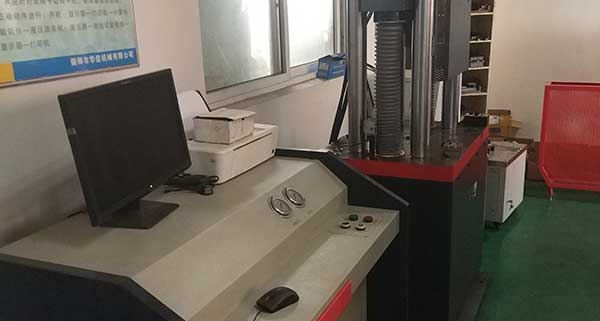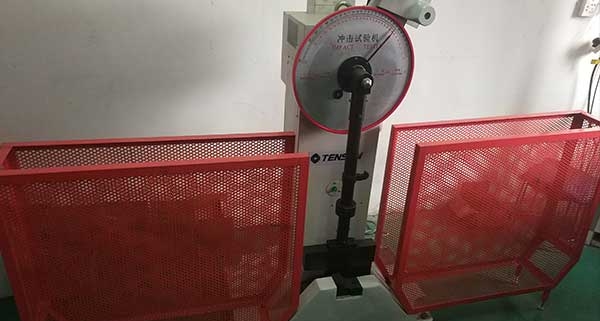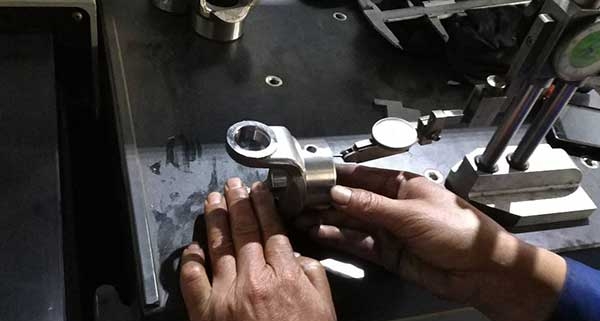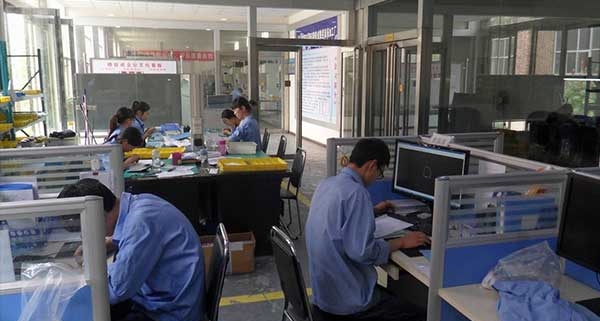- purpose
This procedure identifies and establishes the steps required to ensure customer satisfaction with the product, promotes contact with everyone involved to ensure that the required steps are completed on time, and guides resources to prevent defects, reduce costs, continuously improve, and provide quality products at the lowest cost in a timely manner to satisfy customers.
- Scope of application
This procedure applies to the process development of all products required for the production and/or service of the company.
- Duties and responsibilities
3.1 technology department is the centralized management unit of this procedure, responsible for the establishment of project team and the completion of task allocation.
3.2 all departments shall cooperate with the implementation.
- Work procedures
4.0 process input: customer product requirements, contract/development agreement;Similar product development information
4.1 development preparation
4.1 the general
APQP process is generally divided into: planning and determining the project; Sample development; Process design and development (including review and validation); Product and process validation; Feedback, evaluation and corrective action. The company has no product design and development activities.
- The basic principles of APQP
- A) the purpose is to fully meet customer requirements and expectations.
- Optimize resource allocation to produce quality products that satisfy customers at the lowest cost.
- Promote early identification and prevention to reduce deterioration and avoid late or late changes.
- The basic method of APQP
- A) logical thinking: an analytical method that emphasizes the input and output of the process.
- Synchronization technology: shorten the implementation cycle, close interface relationship, and emphasize efficiency.
- Multi-participation: including internal functional representatives and external customer and supplier representatives planning together.
- Application of error – proofing technology, FMEA, SPC, etc.
4.4 project approval
The sales department, by collecting market information, customer requirements or market survey, on the basis of analysis of sufficient data, based on the company’s business plan and business objectives, puts forward the “project development application form”, which will be reviewed by technical, production, quality control and other departments and reported to the general manager for approval.
4.5 basic process of APQP
4.5.1 plan and determine the project stage:
4.5.1.1 constitute a project team: after the approval of the project development application form, the general manager shall determine the project team leader, organize and set up a project team with representatives of technology, sales, quality control, finance and production (including customers and qualified suppliers when feasible), define their respective responsibilities and urge the project team to carry out work regularly.
4.5.1.2 input data collected by project team members: input data may include customer calls, such as “market research report”, service information and invalidation of main engine plant, return report, company business plan and business objectives, product/process benchmark, previous experience, customer contract or order.
4.5.1.3 project team members shall, on the basis of understanding customers’ needs, expectations and requirements, compile (initial) product process flow chart, product initial material list, (initial) product/process special features list, etc., conduct feasibility analysis and form the feasibility analysis report.
Feasibility analysis: when the project is feasible, it can be carried on to the next stage. If it is not feasible, the technical department can change the relevant scheme or cooperate with the sales department to negotiate with customers.
4.5.1.4 preparation, review and assignment of design tasks: the project team leader shall prepare the design specification and submit an application for review, and the technical supervisor shall organize relevant personnel to conduct review to ensure sufficient and appropriate design input; The content should be complete, clear and not contradictory. After the review, the general manager approves the design specification.
4.5.1.5 plan making: the project team leader shall, according to the requirements of the project, organize the members of the project team to discuss and form the APQP work plan, which shall specify the task requirements, group indirect communication and schedule of each stage and fully consider the current work requirements. See appendix 1 for the work schedule of APQP.
4.5.1.6 members of the project team shall be responsible for organizing and carrying out skills training: the analysis techniques involved in the planning activities, such as FMEA, PPAP, SPC, MSA and development skills training, shall be carried out for the members participating in APQP.
4.5.1.7 manager support: after the project is determined, the project team leader shall fill in the written document of manager support and submit it to the manager for further support, and the design and development shall enter the next stage.
4.5.1 sample development
4.5.2.1 preparation of sample trial production plan: the technical department shall prepare the “notice of new product trial production plan” to ensure the trial production of samples as planned.
4.5.2.2 preparation of sample control plan: process design members of the project team are responsible for preparing the sample control plan. For similar products, the same control plan can be applied to the implementation process of similar products if the universality of the products has been reviewed.
4.5.2.3 the technical department is responsible for preparing the sample process procedures. The sample process specification can be made use of similar product process documents that have been reviewed.
4.5.2.4 preparation list: the technical department shall be responsible for the preparation of the order form/new product equipment/tooling/mold/fixture list, the design of new tooling according to the order form, and the preparation of the test equipment list. Technical documents shall be examined and approved according to the requirements of the administrative measures for technical documents.
4.5.2.5 material procurement: the procurement department is responsible for selecting suppliers from the prescribed suppliers and purchasing materials according to the material list and procurement control procedures.
4.5.2.6 sample trial-manufacture: the production department is responsible for organizing and the production workshop is responsible for trial-manufacture according to the requirements of “notice of trial-manufacture plan for new products”, “control plan” and “process specification”; The quality control department is responsible for testing and testing the samples according to the provisions of the control plan and the process specification, and checking and accepting the new tooling; The quality control department is responsible for process verification.
4.5.2.7 sample confirmation
- A) sample validation may be performed in one or more of the following ways:
— the company tests and tests the samples;
— samples can be submitted to customers for bench or performance testing.
- B) the technology department and the sales department are responsible for collecting customer product design confirmation (installation test) information and keeping it by the technology department.
4.5.2.8 sample technical document changes
In the sample development stage, the technical department shall change the technical documents according to the technical document management measures.
4.5.2.9 management support: after the sample trial production is completed, the project team shall submit an application, and the general manager shall organize members of relevant departments to review the work in the sample development stage. After the review is passed, the project team leader shall fill in the written documents of “group feasibility commitment” and “management support” and submit them to the manager for further support, and the design and development shall enter the next stage. If the original plan cannot be carried out, the work plan should be adjusted according to the situation.
4.5.3 process design and development:
4.5.3.1 process design input and review
The technical department is responsible for collecting the input data of this process and organizing relevant personnel to review and keep records of the input according to the requirements of the product/process quality checklist.
4.5.3.2 process design output and review
- A) preparation of process flow chart: process designers in the technical department shall prepare process flow chart and characteristic matrix table according to product drawing and product special characteristic list. The technical department is responsible for the review according to the process flow chart checklist.
- B) drawing the layout of workshop: the technical department shall draw the layout of workshop according to the principles of process flow chart framework, detection point setting requirements, optimized utilization of site space, reasonable logistics and man-machine engineering. The technical department organizes relevant departments to review the floor plan according to the workshop floor plan checklist.
- C) determination and review of process FMEA analysis and process special characteristics: members of the project team, technical department and quality control department shall prepare product and process special characteristics and process FMEA analysis table according to process flow chart and characteristic matrix table. The project team leader shall organize relevant department members to review the process FMEA and process special features according to the process FMEA checklist.
- D) preparation of pilot production control plan: project team members shall prepare the pilot production control plan. For similar products, the same control plan can be applied to similar product realization process if the commonality of products has been reviewed.
- E) preparation and review of process procedures: the technical department shall prepare the process procedures (including inspection work instruction) according to the requirements of the pilot production control plan, and propose new tooling design tasks. After the completion of the design, the approval shall be conducted in accordance with the provisions of the technical document management measures.
- F) new tooling design: the technical department is responsible for new tooling design. After the completion of the design, the approval shall be conducted in accordance with the provisions of the technical document management measures.
- G) preparation of measurement system analysis plan: members of the project team shall prepare the measurement system analysis plan in accordance with the manual of measurement system analysis. Measurement system analysis is mainly aimed at the measurement system involved in the control plan.
- H) preparation of the initial process capability study plan: the project team members shall be responsible for the preparation of the initial process capability study plan. Initial process capability studies are conducted for all production process projects of developed products.
- I) preparation of product packaging specifications: the technical department is responsible for the preparation of product packaging specifications.
4.5.3.3 process design changes
The technical department shall change the design documents according to the “technical document management measures”.
4.5.3.4 management support: after the goal of the process design and development stage is completed, the project team shall submit an application, and the general manager shall organize members of relevant departments to review the process design and development stage. After the review is passed, the project team leader shall fill in the written documents of “group feasibility commitment” and “management support” and submit them to the manager for further support, and the design and development shall enter the next stage. If the original plan cannot be carried out, the work plan should be adjusted according to the situation.
4.5.4 process validation and verification
4.5.4.1 prepare and issue pilot production plan: the production department is responsible for preparing production plan.
4.5.4.2 job preparation verification: the production workshop shall conduct job preparation verification according to the product production control procedure.
4.5.4.3 pilot production: the production workshop shall organize production according to the pilot production plan. The technical department shall cooperate with the workshop to confirm the process according to the product production control procedure; The quality controller monitors and measures the products according to the control plan. The production department shall provide corresponding records to the technical department; Technical department, production workshop to verify the process.
4.5.4.4 measurement system analysis: the quality control department carries out dual analysis of measuring tools according to the measurement system analysis plan, evaluates, records and forms “measurement system analysis report”.
4.5.4.5 initial process capability study: the workshop shall carry out the initial process capability study according to the initial process capability study plan, and prepare the “initial capacity analysis report”. In case of insufficient capacity, corrective measures shall be proposed.
4.5.4.6 package evaluation: the technical department shall evaluate the package specification and package, and provide the results to the project team.
4.5.4.7 supplier PPAP:
- A) the technical department puts forward the requirement for suppliers to submit PPAP;
- B) technical department and purchasing department shall collect supplier PPAP documents as required;
- C) the technical department shall organize relevant departments to review the supplier PPAP, and approve the batch supply of the supplier after the review is passed.
4.5.4.8 process confirmation
- A) when the customer has no PPAP requirement, the project team shall confirm the company according to the procedure after 4.5.4.11.
- B) when customers have PPAP requirements, implement customer requirements, and the purchasing department is responsible for collecting customer PPAP approval documents. The customer confirms the following method:
— customer PPAP approval;
— customer confirmation of product drawing (countersign or sign similar confirmation opinions);
— customer replacement production drawing;
— other written documents of the customer;
— the customer orders again according to the original drawing (the order contract shall prevail).
4.5.4.9 mass production control plan: after PPAP is passed, project team members shall improve on the basis of pilot production control plan and prepare mass production control plan to meet the control requirements of mass production. The project team leader organizes members of relevant departments to review.
4.5.4.10 preparation list: the technical department is responsible for the preparation of material purchase list and tooling summary table; For similar products, if the commonality of the products has been reviewed, the same list can be applied to the implementation process of similar products.
4.5.4.11 after the trial production, the project team shall submit the application for development review, and the technical department shall organize members of relevant departments to review the design and development process and fill in the record form of design and development review.
4.5.4.12 quality planning, confirmation and summary: APQP shall be confirmed and summarized before the delivery of the first batch of mass production products. Including review:
— whether the control plan is timely updated and fully configured;
— whether the process instructions are advanced, detailed, operable and immediately available;
— whether the measuring tools and test equipment are analyzed for duality, accurate and reliable;
— whether all control plans and process flow charts are followed;
— whether APQP has always received the attention and support of the company’s management and conducted a management review.
4.6 engineering change
4.6.1 internal changes
4.6.1.1 in case of parts stopping production, delivery time, price or other factors requiring replacement materials, the purchasing department shall apply to the technical department for change.
4.6.1.2 if the quality control department finds any quality variation during the inspection, and the process capability analysis confirms that the production conditions must be changed, the change application shall be submitted.
4.6.1.3 when the manufacturing conditions must be changed by introducing new equipment or new processing technology, the production department or relevant departments shall apply for the change.
4.6.1.4 in the process of production, the production department shall apply for change if there are operational improvement Suggestions.
4.6.1.5 in the process of production, inspection and sales of products by other departments, if unreasonable or improvable product design is found, each unit can fill in the “engineering change application form” to apply for change to the engineering department.
4.6.2 customer changes
When the customer requests to change, the sales department shall provide the customer change data and engineering change application form to the technical department to evaluate the feasibility of the change, and the production department shall count the inventory quantity. If the client has a specified format, use a standard format file.
4.6.3 engineering change review
4.6.3.1 external engineering change application, the technical department shall organize relevant departments or multi-functional groups to discuss the feasibility of the change. If it is not feasible, the reasons for the infeasibility shall be recorded and faxed to the customer by the sales department for reassessment.
The technical department shall work with the customer to review patented designs that affect changes in form, fit and function (including performance, and/or durability) to properly evaluate all impacts.
4.6.3.2 internal engineering change application form, after receiving the engineering change application form, the technical department supervisor shall review the product quality, environmental protection, cost, production efficiency and other factors according to the change content. If it is confirmed that it is not feasible, it shall explain the specific reasons for returning it to the application unit for processing. If no consensus is reached, the management shall rule.
The sales department is responsible for notifying and obtaining the consent of customers of any changes affecting the implementation of the products required by customers.
For proprietary designs, impacts on form, fit, function (including performance and/or durability) shall be reviewed with the customer so that all impacts are properly assessed.
4.6.3.3 the engineering change review shall be completed within 2 working weeks, if required by the customer, within the time specified by the customer.
4.6.4 formulate the change plan
After the above change requirements are verified to be feasible, the technical department supervisor shall appoint engineers to organize a multi-functional team to take comprehensive consideration of product quality, environmental protection, cost, efficiency and other factors, and formulate a change plan, which shall be consistent with customer requirements. And record in engineering change request form.
4.6.5 engineering change approval
The engineer will complete the engineering change application form for the change scheme and submit it to the head of the technical department for approval. The technical department will submit the approved engineering change application form and the change data to the business department for the customer’s approval of the change scheme.
4.6.6 implementation of engineering change
After the approval of the engineering change application form, the engineer shall fill in the engineering change notice, distribute it to the production department, technical department and other relevant units, and urge all units to implement the change according to the content requirements of the engineering change notice. The technical department is responsible for tracking the implementation of engineering changes.
4.6.7 engineering change validation
4.6.7.1 the engineer shall arrange the sample production and trial production according to the sample production requirements of this procedure, and submit the qualified samples and relevant materials to the sales department for the customer’s confirmation after the qualified samples are tested.
4.6.7.2 the product size and safety performance test after the change shall be conducted by the laboratory of the quality control department of the company or by an external laboratory entrusted by the company.
4.6.7.3 for material/component changes, the supplier or the company’s outsourced laboratory shall test and provide the corresponding test report. The test report shall be approved by the head of technical department.
4.6.7.4 the technical department is responsible for ensuring that additional verification/identification requirements, such as those for npi, are met when requested by customers.
4.6.8 summary of engineering change
After the completion of engineering changes, if the customer drawings, product specifications and functionality are affected, the technical department shall modify the corresponding control plan, FMEA, inspection specifications and other documents, and the sales department or technical department shall submit them to the customer for approval according to the PPAP procedures, and track the approval results.
4.6.9 file preservation
Change documents related to automobile products shall be retained until the product is discontinued and the after-sales service period is 1 year.




